Samsung Project Moohan: Everything we know about Samsung's Android XR headset
Samsung's mixed-reality headset will challenge Apple with Google's own software. Here's what we know, from its specs to its design.
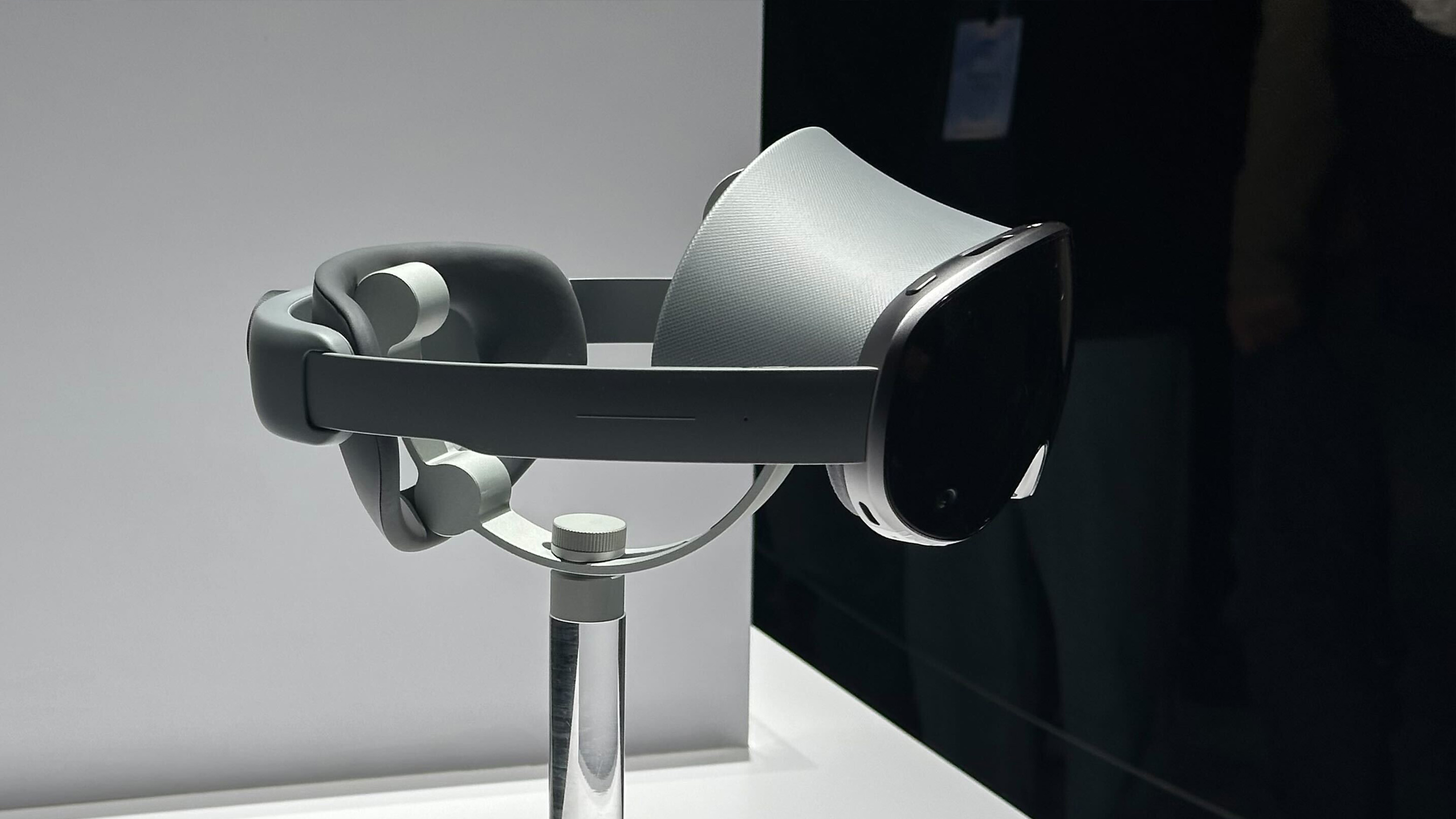
We've known for some time that Samsung is developing an XR headset. It wants a mixed reality device to challenge the Apple Vision Pro, even delaying its old XR prototype after seeing Apple's announcement to give it a competitive advantage. And now, thanks to the unveiling of Android XR, we know Samsung is building a mixed reality headset to challenge Meta and Apple.
Known right now as Project Moohan — a name which means "infinity" in Korean — Samsung's first Android XR-powered headset will allow users to play in virtual reality and mixed reality alike. The headset looks a bit like a mix between the Meta Quest Pro and the Apple Vision Pro, with full support for hand tracking and eye tracking, as well as motion-based controllers.
Google and Samsung are going all-in on XR, and Project Moohan is the proof. Read on to learn more about Samsung's upcoming XR headset.
Samsung Project Moohan: Launch and pricing
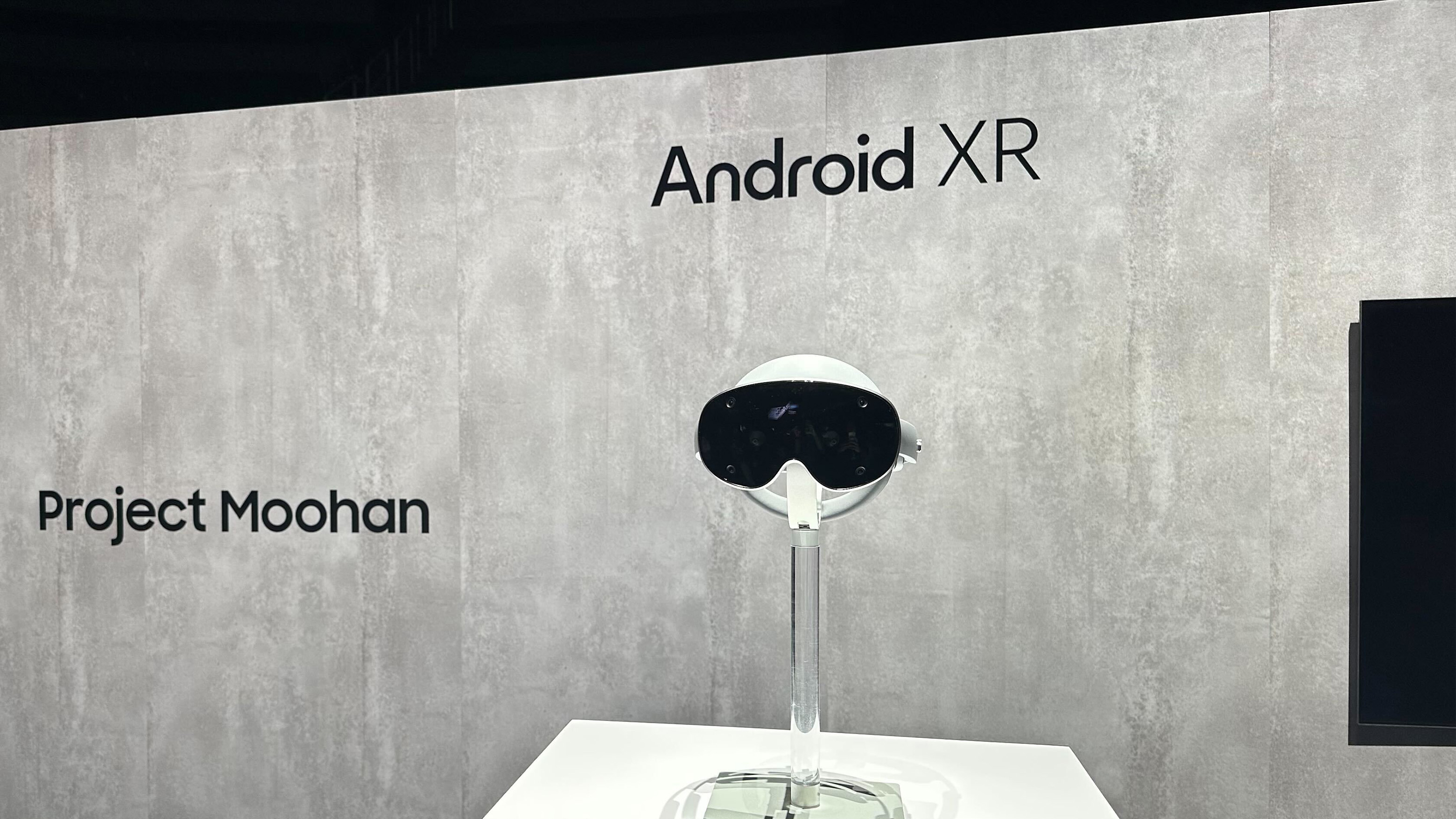
After Apple announced its Vision Pro in June 2023, Samsung allegedly sent an internal memo to employees stating, "We decided to review all internal specifications and performance, such as the design and panel of the new XR product." Essentially, the Apple Vision Pro spooked Samsung into delaying its XR headset into "mid-2025" for a major redesign.
Eventually, its internal XR launch target shifted to December 2024. It turns out that this was just the announcement date for the Android XR platform, including the first demonstration of Project Moohan, its first XR headset. Neither Google nor Samsung have given a specific release date, but we expect it sometime around mid-2025 at the earliest.
As for pricing, we expect Samsung to sell this headset for far less than the Apple Vision Pro. It's using a less powerful chipset than Vision Pro, but many of the headset's other known specs seem up to par with Apple's.
Still, we know that Apple sells its headset at an over 100% markup, and it's unlikely that Samsung will attempt to do the same, especially given Vision Pro's relatively low sales numbers because of its high price. If I had to wager a guess, I'd say Samsung will likely sell it for $1,500 or less.
Be an expert in 5 minutes
Get the latest news from Android Central, your trusted companion in the world of Android
Samsung Project Moohan: Headset and controller design
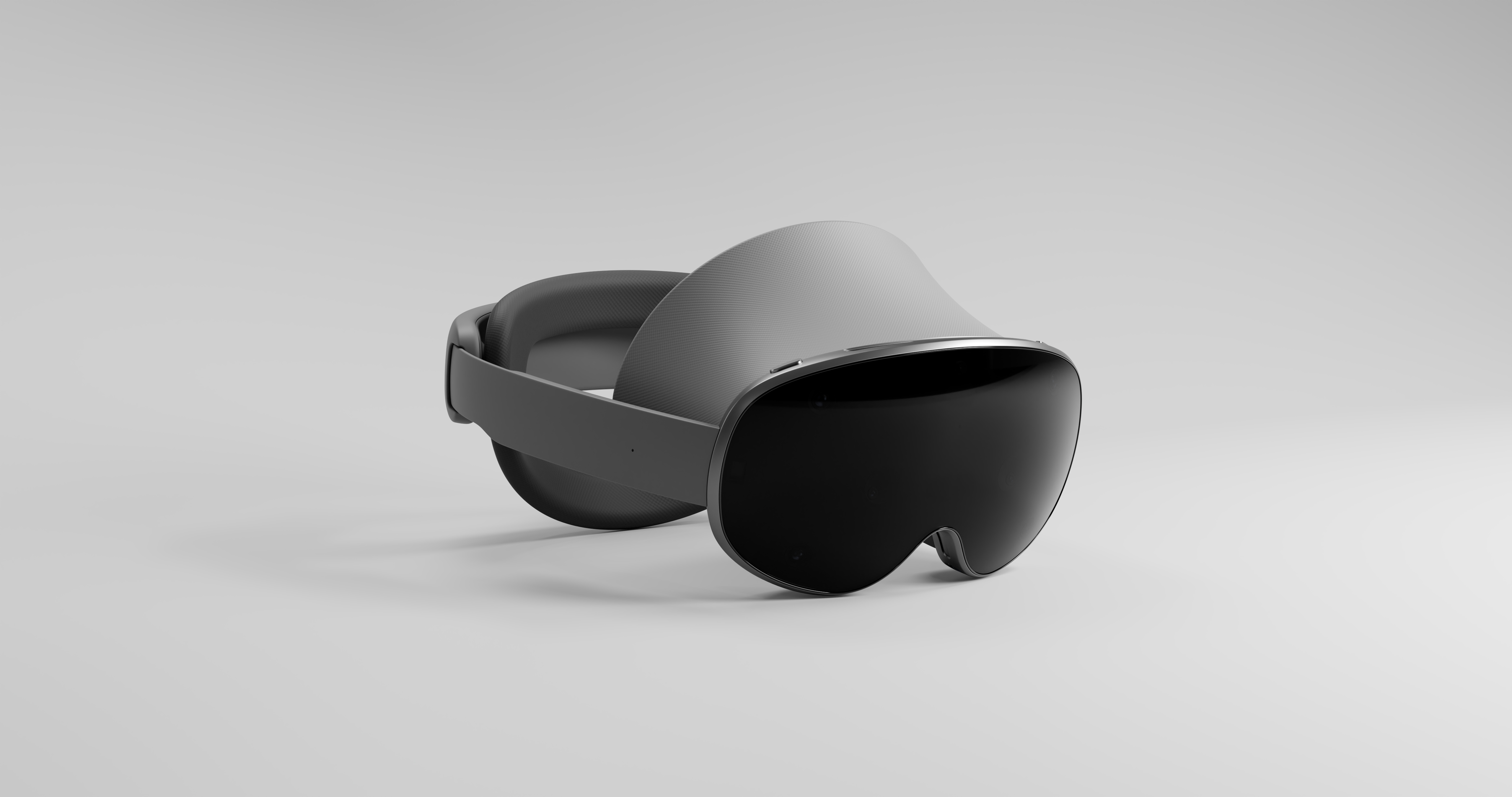
Samsung Project Moohan looks a lot like the Apple Vision Pro and Meta Quest Pro had a baby. Based on initial hands-on reports and the designs shown so far, Project Moohan will allow users to wear it with or without light blockers to better tailor the experience. The light blockers are magnetically attached, making them simple to pop on and off as needed.
This is identical to how the Meta Quest Pro functioned, as users could easily remove the light blockers for a more open mixed-reality experience. This made it possible to see the periphery around the headset, including to the sides and below.
Overall, it looks a lot like a pair of ski goggles, which is something that's been said about both Apple Vision Pro and Meta Quest Pro.

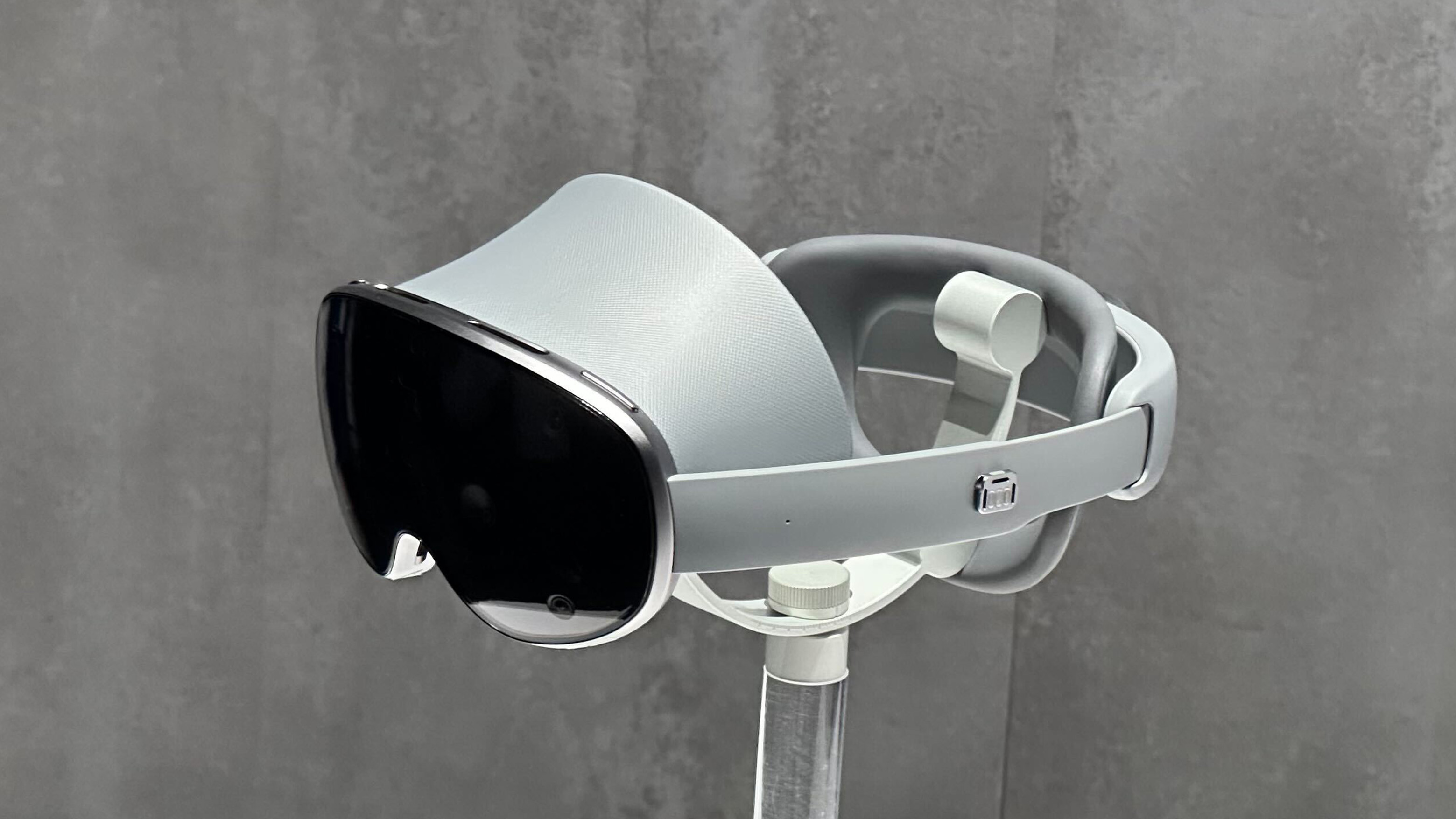
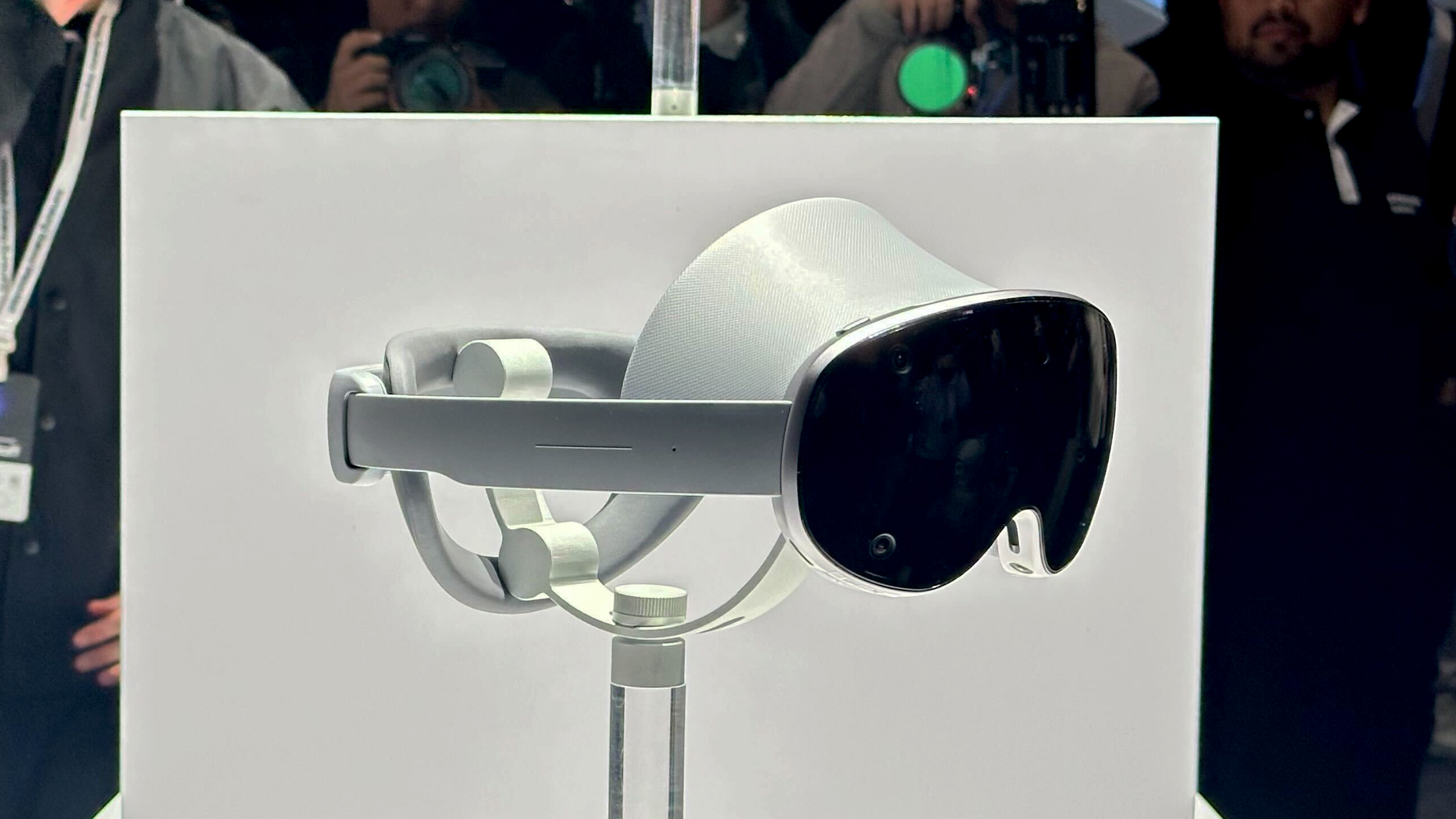
Project Moohan is smartly using a rigid strap similar to the Meta Quest Pro instead of the uncomfortable cloth strap used on the Apple Vision Pro. This helps better distribute weight and provide stability across your head, complete with a nice thick pad along the back of the cranium.
The strap's size can be quickly adjusted via a dial on the back, similar to Meta Quest Pro or the best Meta Quest 3 accessories. A generous forehead pad keeps all the weight spaced out between the user's forehead and the cushion on the back of the head for maximum comfort.
That also means there's no weight placed on a user's face at all, a significant improvement to Apple's face-heavy design. Again, this is nearly identical to how Meta Quest Pro was designed.
Looks like Samsung Moohan has at least 4x IR tracking cameras and 2x IR illuminators. (And 2x RGB cameras for passthrough obviously) pic.twitter.com/liHhjFja9ZDecember 16, 2024
On the front, you'll find what appears like four IR tracking cameras and two IR illuminators for hand and space tracking, plus two RGB cameras for color passthrough vision and two downward-facing cameras for pinch-based gestures. Samsung hasn't released many official specs, so this is mainly speculation based on what we can see in the official render of the product provided by Samsung and Google.
On the inside of the headset, you'll find a pair of pancake lenses that provide the utmost clarity for the micro OLED panels Samsung is using. Each lens has eye tracking around it to better facilitate interaction in XR space. One hands-on report from Road to VR notes that the field of view of Project Moohan is narrower than Quest 3 and Vision Pro but likely wider than Quest 3S.
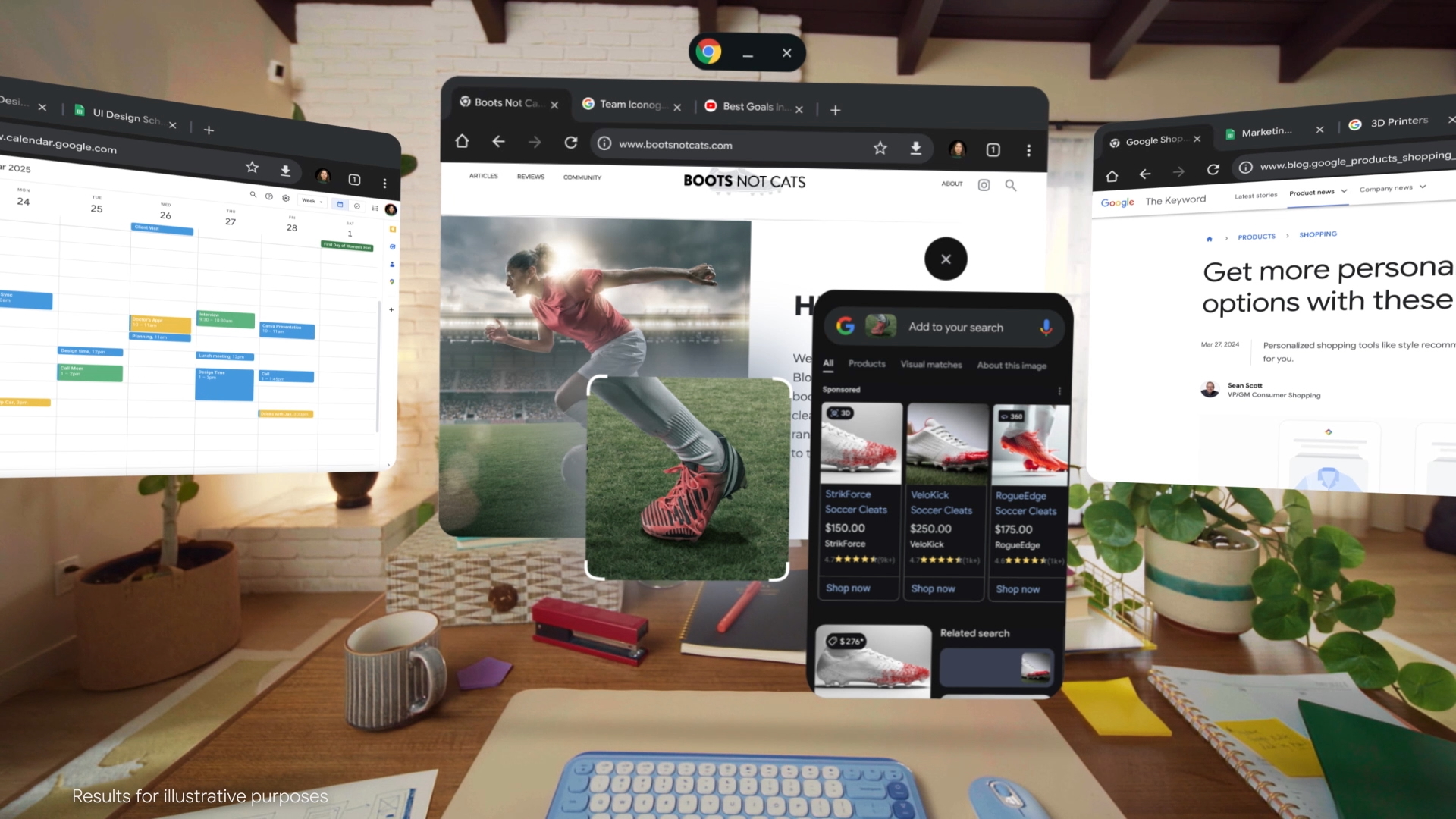
It's said that Samsung is using Sony's 4K Micro-OLED screens to ensure even better visual fidelity than Apple Vision Pro. The rumored displays feature a 3,552 × 3,840 resolution, 1,000-nit brightness at 20% power, 96% DCI-P3 color gamut, and 90 FPS.
That equates to a 2 million pixel advantage over Apple Vision Pro, with the rumored Project Moohan display packing in 13.64 million pixels versus Apple Vision Pro's 11.79 million. This display is also said to feature 4% better DCI-P3 color fidelity, but we don't know if it achieves that through traditional means or with tricks like PWM dimming.
Samsung is making controllers for Project Moohan but we don't know if the company will ship them with the headset or sell them separately.
Whether Samsung will be shipping the Project Moohan headset with controllers is currently unknown. The company officially announced it would be making controllers back at the December Android XR unveiling and a recent listing gives us a model number, ET-OI610, but Samsung could sell these separately rather than pack them in the box with every headset.
Unfortunately, no further information is known about the controllers at this time. In 2025 it's a given that they'll feature motion control and some additional forms of input — probably joysticks and buttons — but we don't know the configuration of these inputs at this time.
What's most important is that Samsung and Google are officially supporting controllers in Android XR and with Project Moohan from the start. Apple made a grave error when it launched its Apple Vision Pro headset without any motion controller support at all, making it impossible to port most VR games to Apple's VR headset. Moohan, and Android XR as a whole, won't suffer from this oversight.
Samsung Project Moohan: Specs and performance
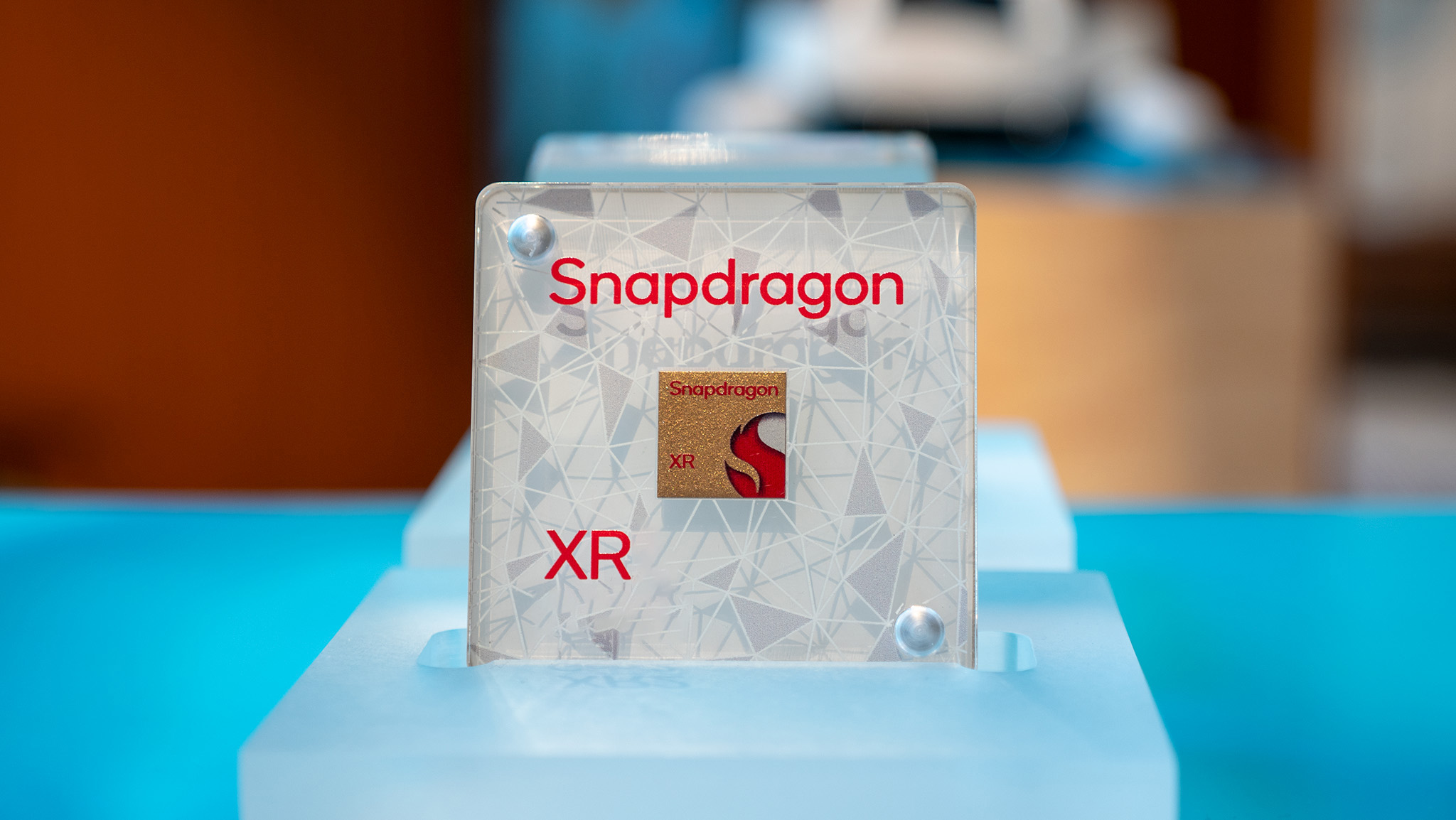
Project Moohan is said to use some of the most cutting-edge hardware that can be found on any XR headset to date. That includes micro-OLED panels with extremely high resolution up to 3,000 DPI — according to leaker @Tech_Reve, pancake lenses for the clearest imagery possible, eye tracking built into the lenses, and ultra high-resolution cameras for clean passthrough mixed reality vision.
Additionally, Samsung and Google have partnered with Qualcomm and will include the Snapdragon XR2 Plus Gen 2 inside Project Moohan. This chipset supports a resolution of up to 4,300 x 4,300 pixels per eye, which would dwarf the Quest 3's 2,064 x 2,208 pixels per eye if Samsung delivers a display that's anything close to the chipset's maximum potential.
That chipset also delivers 20% higher CPU frequency and 15% higher GPU frequency than the Snapdragon XR2 Gen 2 in the Quest 3 and Quest 3S. How this translates into real-world usage remains to be seen, but we know it's more powerful than what's in Meta's best headset.
We don't know other exact specs for the headset yet, including the amount of RAM, display resolution, camera resolution, or other important factors that we'll have to wait a little longer to find out.
Samsung Project Moohan: Software

Samsung Project Moohan, like Apple's Vision Pro, targets the mixed reality UI paradigm first introduced by the Meta Quest 3. Mixed-reality passthrough will enable apps that sit on virtual screens within your real living room, letting you see the world around you while still using virtual apps. It's all powered by Android XR, a new version of Android that Google says is "the first Android platform built entirely for the Gemini era."
This means that the entire UI can be controlled via multimodal input, including eye tracking, hand tracking, controllers, and voice input. Gemini is said to have full power over the experience and can do virtually anything you need it to do, helping to change the paradigm of how we interact with mixed-reality apps.
When Google revealed it on stage, the company said, "You can talk to your device as if you were talking to someone in the physical world." This is because Gemini can see what you see and hear what you hear, including using the cameras on the headset to help identify things around you. Some of this functionality is better used on AR glasses, but we expect to see a lot of it on Project Moohan, as well.

We don't know how many apps will launch with compatibility for Android XR, but it's almost certain that Google's design will allow most Play Store apps to work out of the box on the new mixed reality OS. This gives Project Moohan a huge advantage over Meta Quest headsets from the get-go, as "2D apps" are still very limited on Meta's platform.
Google highlighted many of the company's own apps running on Project Moohan, including Google Photos, Google Maps, YouTube, Chrome, and others. The company discussed how the headset works for both entertainment and productivity thanks to its hardware design, which allows for high-quality immersive and mixed-reality experiences alike.
Apps like YouTube can be run in a floating window or in fully immersive theater mode. Chrome tabs can be pulled off the main window and put in a floating window for use anywhere, giving you "unlimited monitors" to work on no matter where you're working from.
Gemini can see and hear both the real and virtual worlds, making it the first companion to be able to do both at the same time without faltering.
Beyond comparisons to existing headsets, Google hopes to pave a new way to the future through communication with Gemini. Since Gemini can see and hear everything in the real and virtual worlds, it has a significant advantage over Apple's Siri in the Vision Pro and Meta AI in the Quest 3.
This allows you to have a conversation with Google about what's happening in any app you're using as well as the room around you, melding the two together in a way that we simply have not seen before. Google didn't offer too many compelling specifics on how this will change the way you use Project Moohan, but it doesn't take long to imagine what we could see from this sort of integration.
Samsung Project Moohan: Wishlist
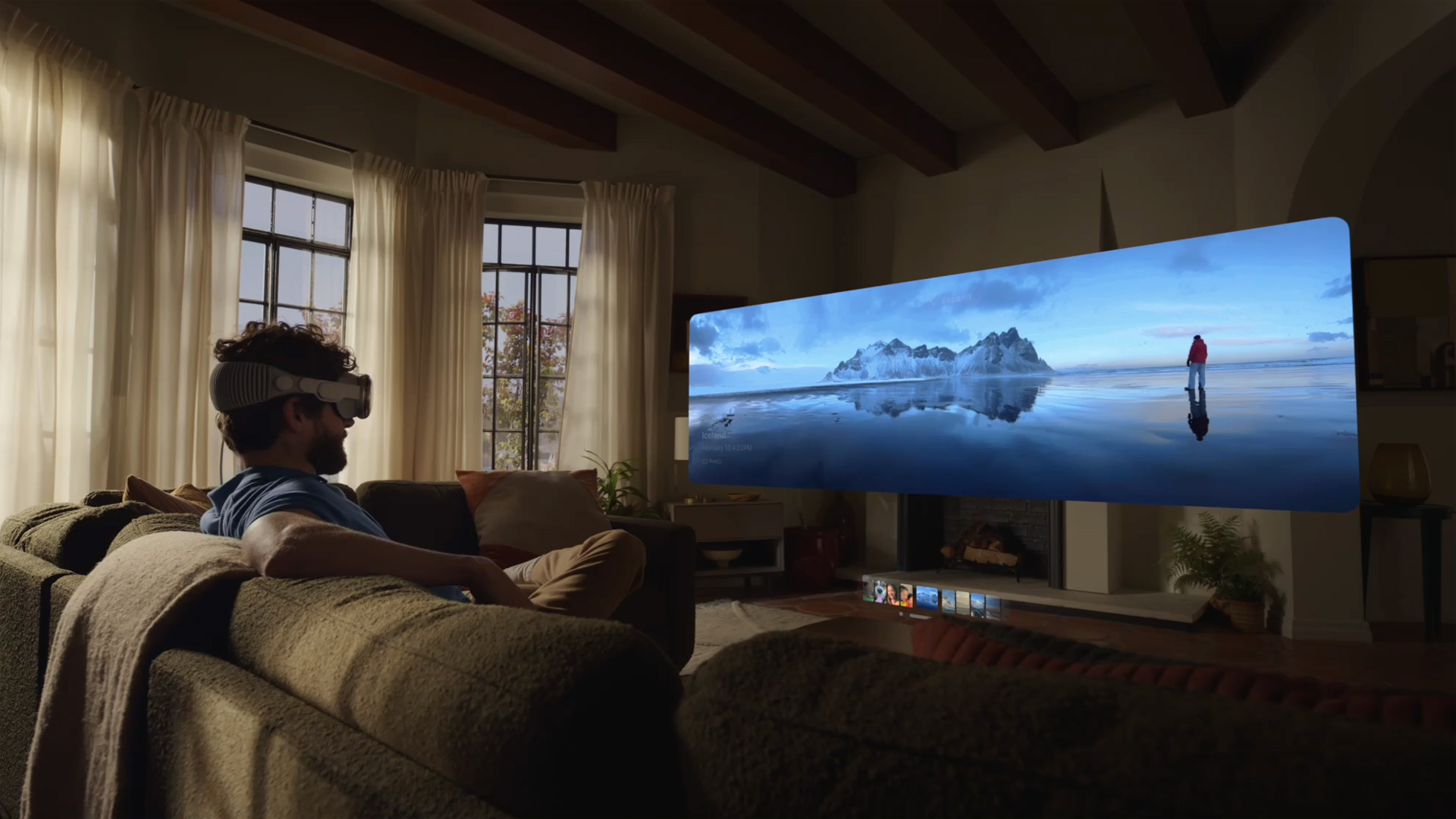
Samsung Project Moohan is said to use a 3,000-dpi OLED display, which, complete with the crisp pancake lenses and full-color passthrough, eye tracking, hand tracking, and a more powerful chipset than the Quest 3, will make it an excellent Vision Pro competitor at a lower price.
That all amounts to a pretty great baseline to challenge the best XR headsets. Still, based on our time testing other mixed-reality and virtual-reality headsets, we have other hopes and requests for what the Samsung Glasses bring to the table to challenge Apple — especially since it could cost upwards of $2,000 based on some rumors.
A strong software launch lineup
One key problem that sunk the Quest Pro was its lack of apps, making it very dependent on the Oculus Browser for work. Meta made partnerships with certain third-party devs that either never panned out or took too long to materialize.
The Apple Vision Pro had the company's own first-party apps from the jump, and it partnered with Microsoft, Disney, Zoom, Adobe, and Zoom for a strong third-party app lineup. Samsung will need to offer something similar.
Specifically, it'll need Google Workspace apps, Microsoft, and other productivity suites to sound compelling, not just its own Galaxy Store apps. Otherwise, no one outside of Samsung superfans will want to spend a couple thousand dollars on one. Based on the Android XR reveal, this is all in place to make a compelling experience come to life.
Powerful, balanced performance
We haven't seen the Snapdragon XR2 Plus Gen 2 in action yet, but it's said to be more powerful than the Snapdragon XR2 Gen 2 chipset in the Quest 3, which at least gives us hope for a great experience. Plus, Google said the Android XR platform has been fully optimized for Qualcomm chipsets, meaning we're getting a bespoke experience from the get-go rather than something shoe-horned in.
The Snapdragon XR2 Plus Gen 2 isn't based on newer Oryon cores from the Snapdragon 8 Elite series, though, which means these are still primarily mobile chipsets rather than laptop-grade chipsets like Apple uses in Vision Pro. Whether that makes any difference at all remains to be seen.
Strong battery life
Apple uses an external battery pack that sits on your belt; despite that, the Vision Pro barely hits two hours per charge. Samsung is using the same tethered battery pack design, but we don't yet know the battery capacity or rated battery life.
Our hope is that Samsung includes at least a small battery in the headset to make swapping out these packs more simple. That way, you can swap out the battery when one gets low without having to power down the headset.
Having the battery as an external peripheral is a great design for a few reasons, one of which is reducing the headset's weight. The other is that you can always get additional batteries and/or third-party accessories that provide larger batteries for longer use.
Don't forget about gaming
Even though Samsung only debuted the headset on stage using eye and hand tracking, Project Moohan is said to fully support motion-tracked controllers, just as the Meta Quest platform does. As such, we fully expect Google and Samsung to court developers to bring their VR games over to the Android XR platform.
We already know that Job Simulator and Vacation Simulator are being brought over to Android XR, which means we'll certainly be seeing some of the other best Meta Quest games make their way to the platform, as well.
Additionally, the folks who make Job Simulator, Owlchemy Labs, have created Android XR's onboarding processes with a new experience called Inside [JOB]. It uses the company's lovable and well-known Job Simulator universe to help users learn how to use Project Moohan and Android XR in a playful way. It primarily uses eye and hand tracking in a mixed reality environment, but we expect even more from Google and Samsung as the headset gets closer to release.

Michael is Android Central's resident expert on wearables and fitness. Before joining Android Central, he freelanced for years at Techradar, Wareable, Windows Central, and Digital Trends. Channeling his love of running, he established himself as an expert on fitness watches, testing and reviewing models from Garmin, Fitbit, Samsung, Apple, COROS, Polar, Amazfit, Suunto, and more.
- Nicholas SutrichSenior Content Producer — Smartphones & VR
You must confirm your public display name before commenting
Please logout and then login again, you will then be prompted to enter your display name.

